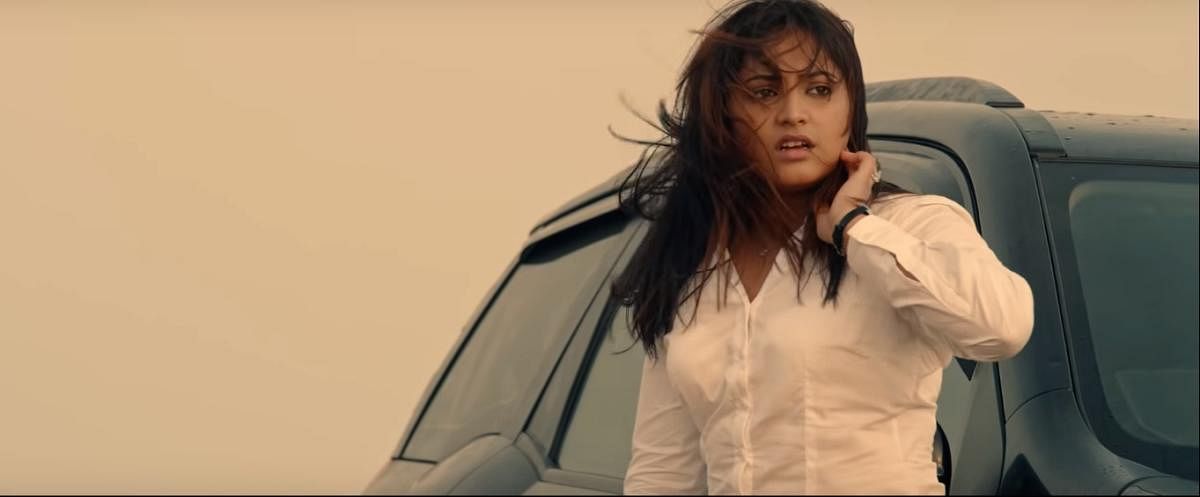
Kannada popular cinema, which was once monolithic and focused on the culture and attitudes of former Princely Mysore, has undergone a transformation with people from outside the territory entering it and the new films have found an audience. Among the first of the films to break with what was traditional was Pawan Kumar’s ‘Lucia’ (2013) and after that, there was Rakshit Shetty’s ‘Ulidavaru Kandanthe’ (2014) with its roots in Mangaluru rather than Bengaluru. ‘Ondu Motteya Kathe’ (2017) was another big success. The most heartening thing about ‘Katha Sangama’ (producer Rishab Shetty among others) is not that by putting seven short stories together it is doing something completely new or even that the stories deal with real people instead of the ‘Puranic’ characters played by Jaggesh and Upendra, but that we hear different kinds of Kannada being spoken, which was once unimaginable. Once, spoken Kannada even implied hierarchy, with only the Mysorean kind denoting the category to which protagonists could belong.
Katha Sangama begins by admitting its debt to Puttanna Kanagal, who also put short stories together although they were fewer in ‘Katha Sangama’ (1976). His film anthology was an attempt to make art cinema, but with mixed results. One of the three short films put together, however, ‘Munithayi’, was shocking and transgressive as art cinema has hardly ever been in India, and is my own candidate for the best art film made in Kannada.
‘Katha Sangama’ begins with ‘Rainbowland’ a rather kitschy story dealing with a little girl who hears a story set in ‘Rainbowland’ from her father and wants to visit the place the very next day. Her father duly takes the day off from the office and sets up ‘Rainbowland’ in the backyard with balloons and buntings but, as luck will have it, it rains and the setup is ruined. When the little girl returns home from school and wants to see ‘Rainbowland’ he tries to push off the visit and earns her wrath. But to the good fortune of the whole family, the rain and the sunshine bring on a rainbow and the girl is happy.
A factor about ‘Rainbowland’ that one does not encounter in Kannada films was the father and mother talking to each other in Hindi to prevent the little girl from catching on to what they are saying. Usually, it is only English that is spoken as an additional language in Indian films and the language is used to denote education and breeding. Here it is Hindi that is being spoken and the fact that the film is set in familiar Bengaluru, in which one hears a plethora of languages, made this aside in the Hindi language very appropriate.
The second film ‘Sathya Katha Prasanga’ has Prakash Belwadi in the lead role, that of an employee due to retire the next day, the drabness of retired life that awaits him and the miracle that transforms him into someone who loves life. The film did its best to ‘experiment’ through cutting back and forth in time and mixing fantasy with reality, as a result of which its coherence was affected. Experimentation in cinema is fine but what usually happens is that the delivery of the story is hampered; the difficulty in understanding a film is not necessarily due to its level of profundity or its formal audacity, and it is more often on account of faulty syntax.
‘Girgitle’ had Raj B Shetty in the lead role and it is evident that the actor has improved since ‘Ondu Motteya Kathe’. The Kannada spoken in this film is predictably (and charmingly) Mangalorean but I was surprised by abuse the male protagonist’s love interest hurls at him and the open sexual references in their conversation.
This film is a kind of fantasy perhaps with ‘Groundhog Day’ as an inspiration, since it is about cyclical time, i.e. the same experience repeating time and again. Here again, there were syntactical errors that tended to confuse.
It would be pointless to describe all the individual films in ‘Katha Sangama’ since what is important is not the quality of the films — which are passable but hardly noteworthy — but that there should be such a film at all, being publicly released. But where the first three films were playful rather than sententious, ‘Uthara’ took its own message much too seriously and it got really tedious. It should be evident to anyone intelligent that twenty minutes is an inadequate time in which to come out with a moral indictment of social media.
In the past decade, the spectator profile of popular cinema has transformed substantially because of audience segregation: It is possible to target only the educated through the multiplexes and this has meant a new kind of cinema largely catering to the metropolises, especially for those who use/speak English.
Kannada cinema has now woken up to this and Katha Sangama caters to a new audience that was once perhaps getting the same entertainment from Hindi and Tamil cinema, which were ahead.
In ‘Ulidavaru Kandanthe’, there was a sense that Mangaloreans looked to Mumbai rather than Bengaluru for inspiration, and it is perhaps Mumbai-inspired Mangalorean blood in Kannada cinema that is making it cosmopolitan, as it never was.
(The writer is a well-known film critic)